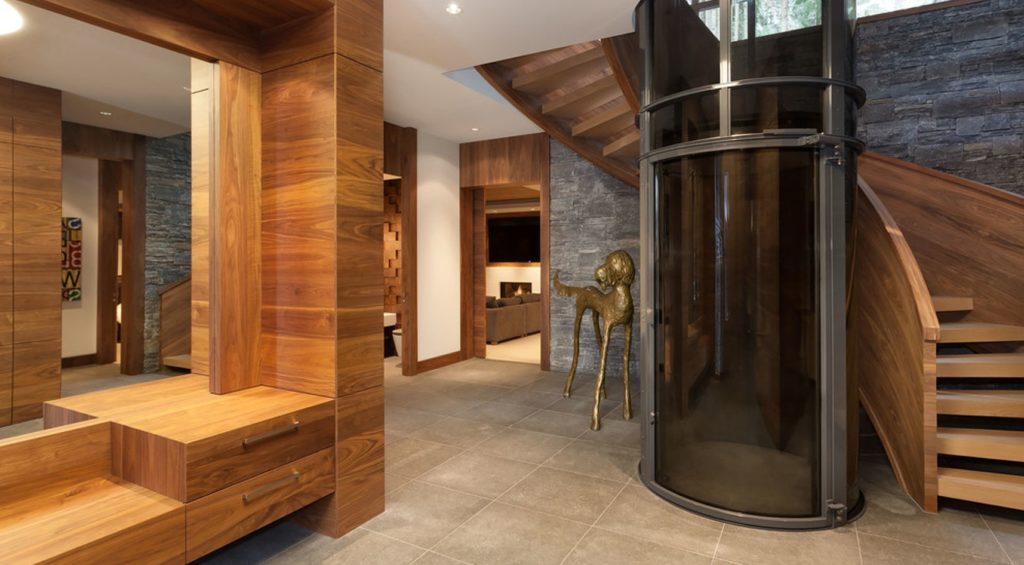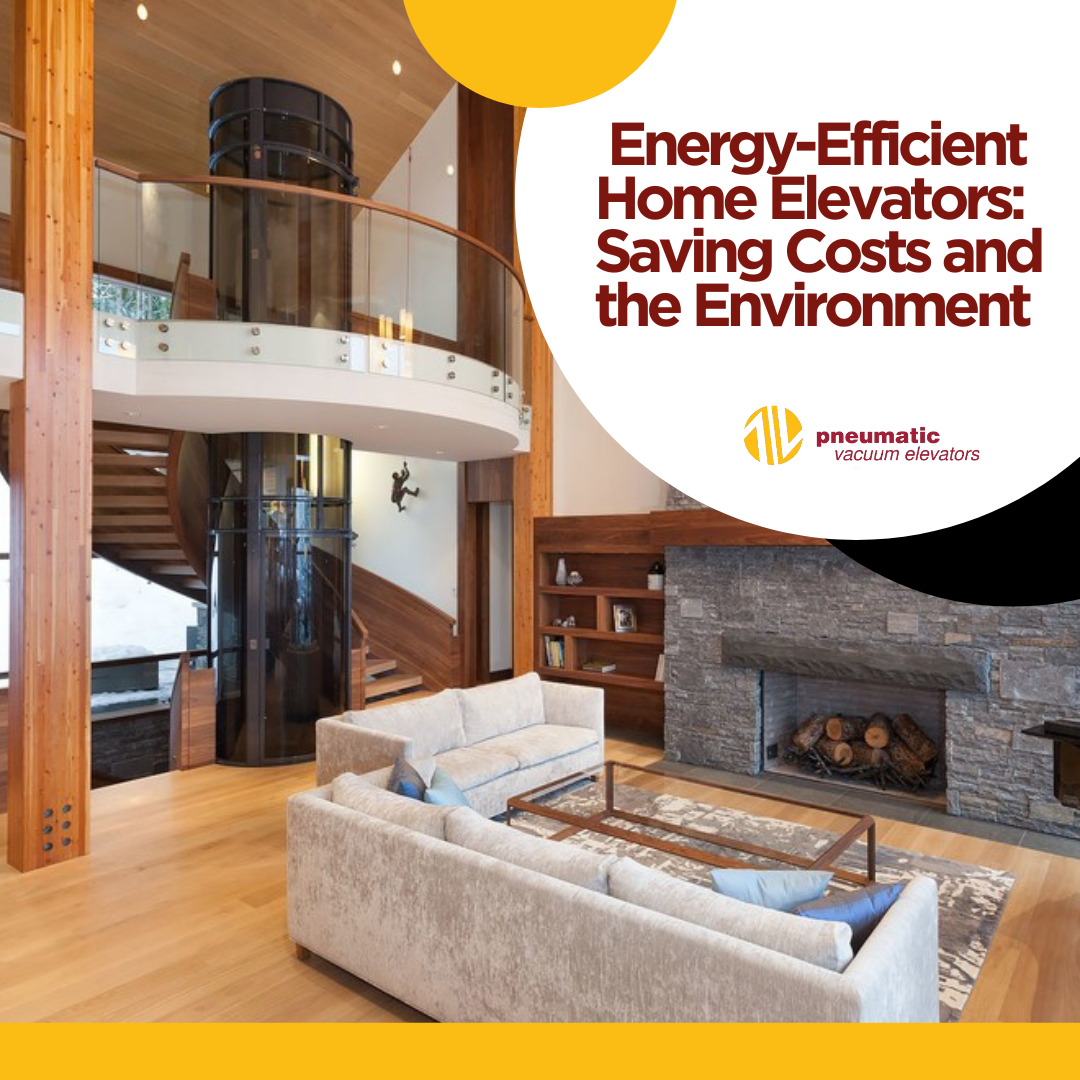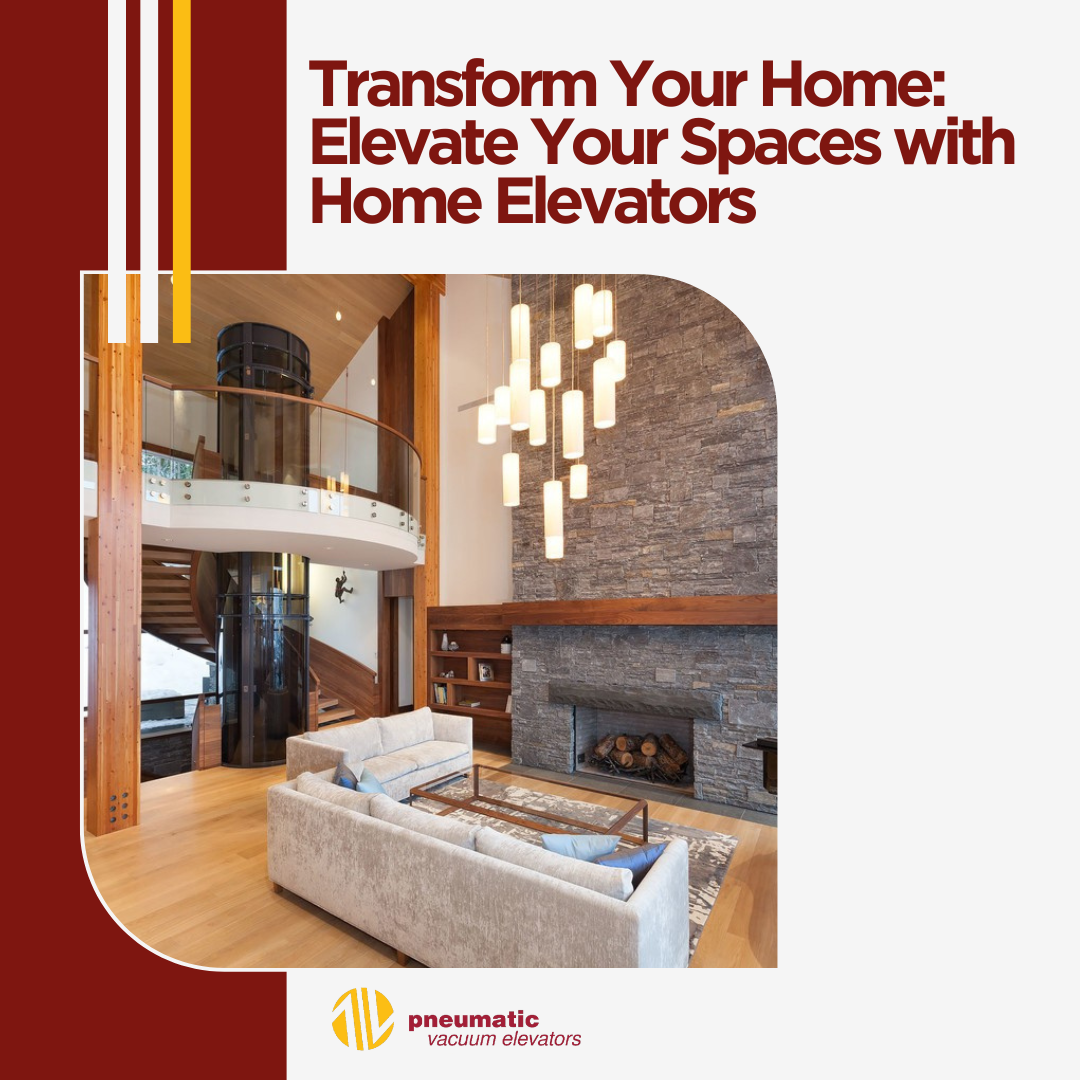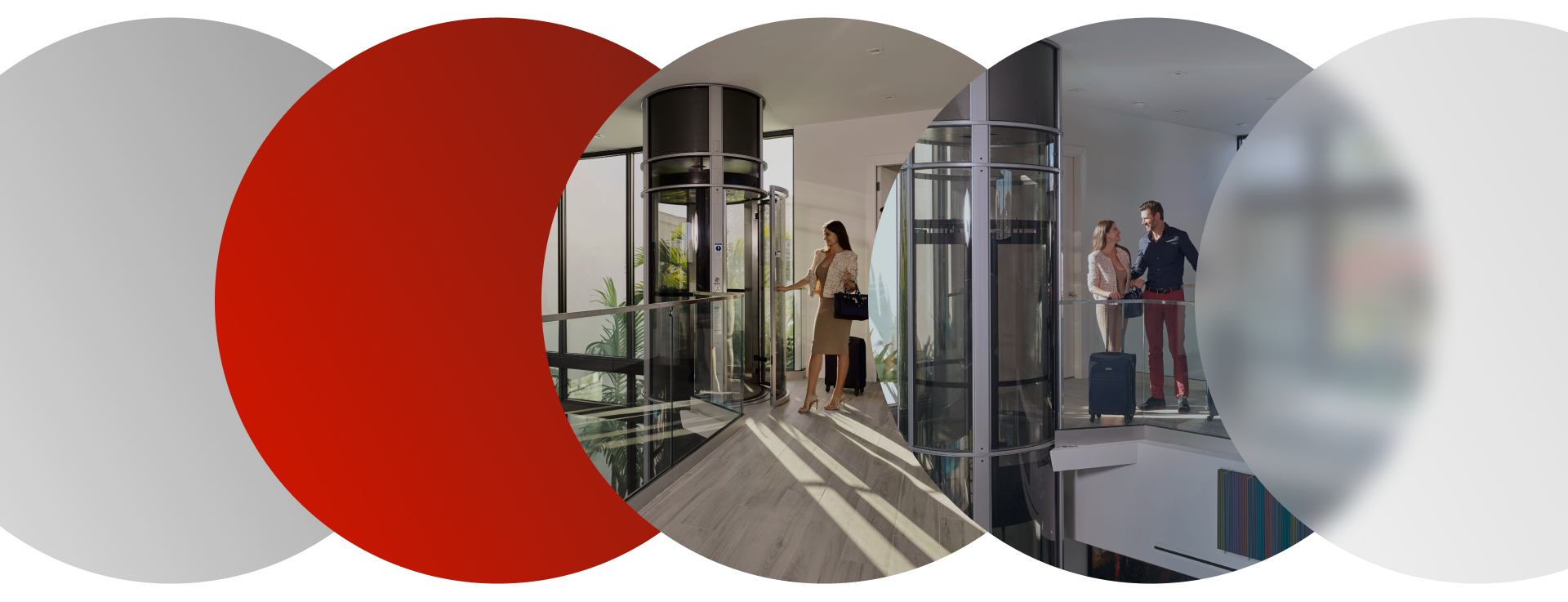Homeownership comes with the desire for comfort and accessibility. For individuals with mobility limitations or multi-story layouts, home elevators offer a solution. But how do these marvels of modern engineering function? Today, we delve into the fascinating world of hydraulic home elevators, exploring their inner workings and their potential for your living space.
Powering Up: The Hydraulic Heartbeat
The key to a hydraulic elevator’s magic lies in its namesake – hydraulics. Imagine a sealed system filled with hydraulic fluid, a special oil. When an electric pump activates, it pressurizes this fluid, sending it coursing through pipes. This pressurized fluid then reaches the heart of the system – a piston housed within a cylinder.
Think of the piston as a powerful muscle. As the pressurized fluid enters the cylinder, it pushes against the piston, causing it to rise. This upward movement of the piston translates to the movement of the elevator car, smoothly lifting it towards your desired floor.
Want to know how pneumatic and hydraulic elevators are different? Read this guide.
Descending Gracefully: The Downward Dance
But what about coming down? Here’s where things get clever. When you press the “down” button, the control system directs the pump to release the pressure on the fluid. This allows the weight of the elevator car, combined with gravity, to gently push the fluid back into the reservoir. As the fluid recedes, the piston and the car descend smoothly, ensuring a comfortable and controlled descent.
Variations on a Theme: Different Types of Hydraulic Elevations
While the core principle remains the same, hydraulic home elevators come in two main configurations:
1. In-ground piston: This design involves a deep cylinder sunk into the ground below the elevator shaft. The piston moves within this cylinder, directly lifting the car. While space-saving above ground, this option requires excavation and might not be suitable for all foundations.
2. Twin-post piston: This configuration utilizes two above-ground cylinders positioned on either side of the elevator shaft. These cylinders work in tandem, pushing the car upwards. This design eliminates the need for digging but requires more headroom compared to the in-ground option.
Safety First: A Secure Ascent for Hydraulic Elevator for Home
Safety is paramount in any elevator system. Home hydraulic elevators boast multiple safety features, including:
- Overload protection: Sensors prevent the elevator from operating if the weight exceeds its capacity.
- Emergency stop buttons: Both inside and outside the car, these buttons instantly halt the elevator’s movement.
- Power outage backup: Battery-powered systems ensure safe descent in case of power cuts.
- Safety valves: These prevent uncontrolled movement due to sudden pressure loss.
- Regular maintenance: Scheduled inspections and servicing ensure optimal performance and safety.
Considering a Hydraulic Home Elevator: Weighing the Pros and Cons
Pros:
- Smooth and quiet operation: Hydraulic systems offer a comfortable ride with minimal noise.
- Space-efficient: They require less overhead space compared to traction elevators.
- Accessibility: Perfect for individuals with mobility limitations or multi-story homes.
- Variety of designs: Available in various styles and finishes to complement your home’s aesthetics.
- Relatively affordable: Compared to other home elevator options.
Cons:
- Limited travel height: Typically suitable for low-rise homes (2-3 floors).
- Speed: Slower than traction elevators.
- Maintenance needs: Regular servicing is crucial for optimal performance and safety.
- In-ground piston design requires excavation.
Taking the Next Step: Finding the Right Hydraulic Elevator for You
If you’re considering a home hydraulic elevator, thorough research and consulting with professionals are essential. Factors to consider include:
- Your specific needs and budget: Assess your home layout, travel requirements, and financial constraints.
- Available space: Determine the type of design (in-ground vs. twin-post) that best suits your space.
- Safety features: Ensure the chosen elevator adheres to safety regulations and incorporates necessary features.
- Reputation of the manufacturer and installer: Opt for companies with proven track records and expertise.
By carefully evaluating your needs and exploring the available options, you can find a hydraulic home elevator that elevates not only your home’s accessibility but also your quality of life.
Dispelling Myths and Misconceptions: Home Hydraulic Elevators Demystified
While home hydraulic elevators offer undeniable benefits, some concerns and misconceptions might deter potential homeowners. Let’s address these head-on:
Myth 1: Installation is disruptive and messy.
Fact: While installation requires professional expertise, modern techniques minimize disruption. In-ground models require excavation, but this can be localized and completed efficiently. Twin-post designs typically don’t necessitate major structural changes.
Myth 2: Home hydraulic elevators are noisy and clunky.
Fact: Advanced hydraulic systems operate very quietly. You might hear a soft hum during operation, but it’s unlikely to disrupt daily life. Additionally, smooth piston movement ensures a comfortable, vibration-free ride.
Myth 3: Maintenance is expensive and time-consuming.
Fact: While regular maintenance is crucial, it’s typically no more complex or costly than servicing other major home appliances. Scheduled inspections and minor adjustments help prevent problems and ensure smooth operation, potentially saving you money on expensive repairs down the line.
Myth 4: Home hydraulic elevators are prone to breakdowns.
Fact: With proper installation, maintenance, and usage, home hydraulic elevators are highly reliable. They incorporate safety features like overload protection and emergency stops. Furthermore, reputable manufacturers offer warranties and service contracts for added peace of mind.
Myth 5: Home hydraulic elevators are only suitable for large homes.
Fact: While limited in travel height, hydraulic elevators are available in various sizes and configurations. They can seamlessly integrate into even smaller homes, providing accessibility between two or three floors.
H3: Beyond the Hype: Making an Informed Decision
Remember, a home hydraulic elevator is a significant investment. By addressing these common concerns and conducting thorough research, you can make an informed decision that aligns with your needs and budget. Consider the following:
- Talk to multiple reputable manufacturers and installers. Get quotes, compare features, and ask about their experience and expertise.
- Schedule in-home consultations. This allows professionals to assess your space and provide tailored recommendations.
- Factor in long-term costs. Consider not only the initial installation price but also maintenance fees, energy consumption, and potential resale value.
- Don’t rush the decision. Carefully weigh the pros and cons, ensuring the elevator truly enhances your accessibility and quality of life.
By approaching your research diligently and addressing any concerns head-on, you can confidently embark on the journey of elevating your home experience with a hydraulic elevator.
Elevate Your Life with PVE: Unlocking the Potential of Home Elevators
As we discussed, home hydraulic elevators offer a unique solution for increasing accessibility and comfort in your living space. While there are various manufacturers to choose from, PVE stands out with its innovative approach and commitment to quality. Let’s explore how PVE home elevators can elevate your home experience:
Pioneering Technology:
PVE is the industry leader in pneumatic vacuum elevators, a revolutionary technology that uses pressurized air instead of hydraulic fluid. This translates to several advantages:
- Space-saving design: No need for a dedicated machine room or pit, making them ideal for retrofit installations.
- Silent operation: Experience a whisper-quiet ride, free from the typical hum of hydraulic systems.
- Energy efficiency: Vacuum technology consumes significantly less energy compared to traditional hydraulics.
- Environmentally friendly: No hydraulic fluid means reduced environmental impact.
PVE Model Variety:

PVE offers three distinct models to cater to diverse needs:
- PVE30: This sleek, single-passenger cabin is perfect for tight spaces and offers up to 50ft of travel.
- PVE37: Ideal for families or individuals requiring wheelchair access, this model accommodates two passengers or one wheelchair user.
- PVE52: Designed for larger families or heavier loads, the PVE52 comfortably fits three passengers and boasts impressive lifting capacity.
Customization Options:
PVE understands that your home is unique. That’s why they offer a wide range of customization options, including:
- Multiple cabin finishes: Choose from various materials and colors to match your existing décor.
- Doors and access points: Select automatic or manual doors, and customize their placement for optimal convenience.
- Lighting and features: Enhance your ride with interior lighting, mirrors, and even phone charging capabilities.
Beyond Functionality:
PVE elevators aren’t just about accessibility; they’re about elevating your lifestyle. Imagine:
- Effortlessly accessing any floor in your home, regardless of age or mobility limitations.
- Creating a multi-generational living space where everyone feels comfortable and independent.
- Adding a touch of luxury and convenience to your daily routine.
- Increasing the value and appeal of your home, making it future-proof for resale.
Taking the First Step: Ready to discover how a PVE home elevator can transform your life? Here’s what you can do:
- Visit the PVE website: Explore their models, features, and customization options.
- Request a free consultation: Discuss your specific needs and get personalized recommendations from a PVE expert.
- Schedule an in-home assessment: Have a PVE representative visit your home to evaluate the feasibility and recommend the perfect model.
Whether you dream of effortless access between floors, enhanced independence, or simply adding a touch of luxury, PVE home elevators offer a solution that goes beyond functionality. Embrace the potential of a truly elevated home experience with PVE.








